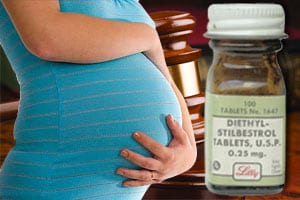
Four sisters, who all suffered from injuries they allege are the result of their mother having had taken DES during her pregnancy, are suing drug maker, Eli Lilly and Co. The sisters argue that Eli Lilly neglected to test the effects of DES (diethylstilbestrol) on developing babies prior to touting it as a medication to […]
 Four sisters, who all suffered from injuries they allege are the result of their mother having had taken DES during her pregnancy, are suing drug maker, Eli Lilly and Co.
Four sisters, who all suffered from injuries they allege are the result of their mother having had taken DES during her pregnancy, are suing drug maker, Eli Lilly and Co.
The sisters argue that Eli Lilly neglected to test the effects of DES (diethylstilbestrol) on developing babies prior to touting it as a medication to prevent miscarriages, said The Associated Press (AP), citing the plaintiffs’ attorney’s opening statements this week. Of five sisters, four developed breast cancer. A fifth did not; she was the only pregnancy in which their mother did not take DES, noted the AP. The sisters seek unspecified damages.
Eli Lilly’s attorney told the jury no evidence exists linking the synthetic estrogen to breast cancer in the four women and medical records do not confirm the women’s mother took DES or took Eli Lilly-manufactured DES, said the AP. At the time the women were born, DES was not patented and was produced by a number of companies.
The sisters’ case is the first of its kind to make trial from scores of other cases filed nationwide over claims of injuries linked to DES. A total of 51 women have DES lawsuits pending in U.S. District Court in Boston against more than a dozen drug makers that either manufactured or marketed the drug, the AP said.
As we’ve explained, DES was prescribed heavily to pregnant women from the 1940s through the 1970s to prevent miscarriage, premature birth, or other problems during pregnancy. Thousands of women born to mothers prescribed these drugs allege adverse reactions as a result of their mothers being prescribed DES.
DES was first prescribed in 1938 to women with a history of miscarriages or giving birth prematurely; the drug received U.S. Food and Drug Administration (FDA) approval in 1941 to treat some menopausal and postpartum conditions, later receiving approval for miscarriage prevention. In 1971, Massachusetts General Hospital physicians published a study in The New England Journal of Medicine that found a link between DES and rare vaginal cancer in the female children of DES mothers. The study results prompted the FDA to issue a drug bulletin to physicians recommending against prescribing DES to pregnant women. In 1975 the agency withdrew market approval for DES products containing 25 milligrams or more and mandated warning labels be included on lower doses.
Since, other adverse reactions have been linked to DES, said the FDA, including that women prescribed DES when pregnant suffer a 30 percent increased risk for developing breast cancer. A link was also found between non-cancerous epididymal cysts in male children of DES mothers, said the FDA. The FDA continued to withdraw DES approval and, in 1997, the last U.S. manufacturers stopped making and selling the drug. In 1999, DES was added to the FDA’s list of drugs withdrawn or removed from the market over safety or efficacy reasons.
The four Melnick sisters say they all developed breast cancer when they were in their 40s and that their mother took DES while pregnant. Their mother never took DES while pregnant with a fifth sister who has not developed breast cancer. In fact, all four sisters suffered miscarriages, fertility problems, or other reproductive tract problems, all of which have long been suspected of being caused by prenatal DES exposure, said the AP. The women were diagnosed with breast cancer between 1997 and 2003 and underwent treatments ranging from lump removal surgery to full mastectomy, radiation, and chemotherapy.
Meanwhile, thousands of lawsuits have been filed alleging links between DES and vaginal and cervical cancers and fertility problems. Many such cases were settled, said the AP. We also previously wrote that a magistrate judge ruled that expert testimony was to be allowed in a DES breast cancer lawsuit. According to the judge, the plaintiffs sufficiently supported expert testimony that found that DES exposure in the womb later increases breast cancer risks in women over the age of 40, a significant blow to 14 drug makers fighting class action allegations concerning the controversial anti-miscarriage medication.


